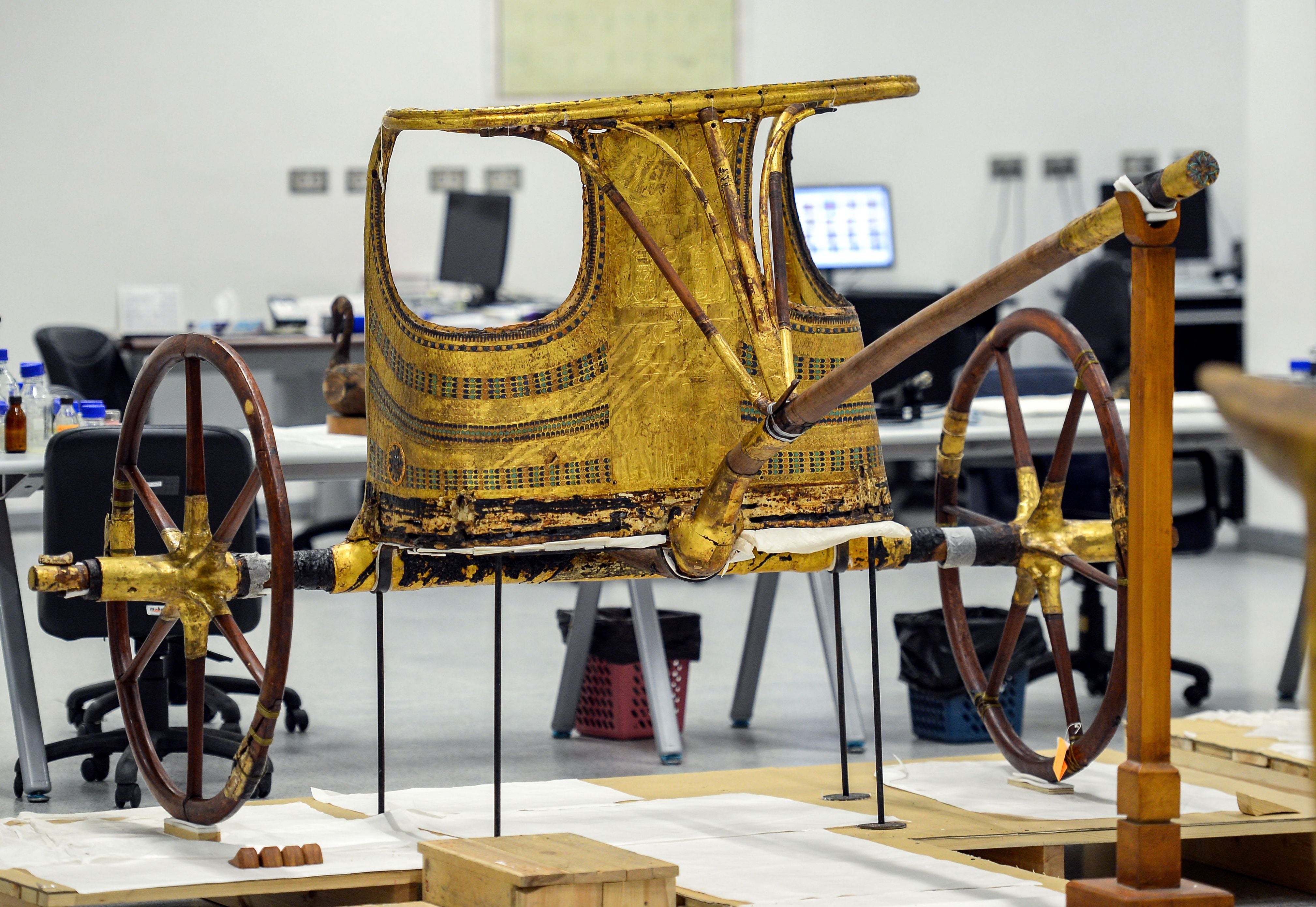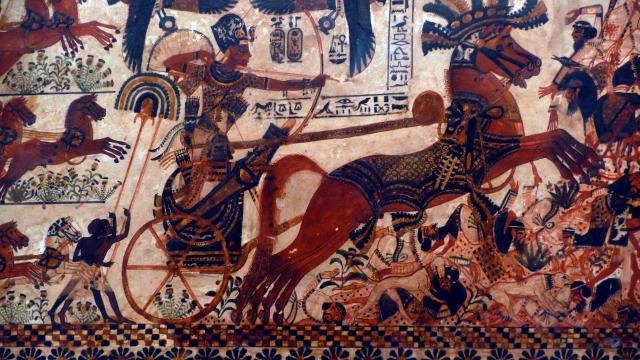A new theory from a biomedical Egyptologist sheds light on the mysterious death of one of ancient history’s most famous leaders: Pharaoh Tutankhamun, the 18th-dynasty king who ruled Egypt from 1332 to 1323 B.C.E.
Tutankhamun didn’t reach world renown as a leader — he only served as Pharaoh for ten years before dying at 19 years old — but for his tomb. Found in 1922, Tutankhamun’s tomb remains the most complete burial site of an ancient Egyptian ruler ever found. Inside, archeologists found everything the boy king might need for the afterlife, including six chariots and an overwhelming amount of dry white wine stashed away. In fact, wine was the most common item found in the tomb.
While his tomb is well-researched, his actual death remains a mystery. It seems he died as a result of a wound he received in a chariot crash (and lowered immune system due to malaria) and early researchers figured Tutankhamun was a weak and sickly ruler owing to several genetic abnormalities found within his body, such as a large overbite and a clubbed foot. These would have been debilitating in ancient times, such that Tutankhamun’s ability to even walk was questioned, let alone ride a chariot (walking sticks were also found buried in the tomb.)
But biomedical Egyptologist Sofia Aziz told the BBC’s Science Focus this vision of the Pharaoh is incorrect, noting he was likely a fairly healthy typical teenager with all the bad decision-making skills that come along with that:
Aziz suggests that scientists have been wrong to profile the king as an invalid.
“He was like a typical teenager, drinking and probably driving the chariot too fast,” Aziz told BBC Science Focus during the Cheltenham Science Festival.
Much attention has been given to the variety of foods interred with King Tut, which were embalmed with resin to preserve them. “But people don’t think about the wine,” said Aziz. “In their tombs, the Ancient Egyptians would take the things that they wanted in the afterlife.”
According to Aziz, the majority of the king’s stash was dry white wine, suggesting that he showed a strong preference. He also had six chariots interred with him in his tomb.
“This new theory says that he’s more of a warrior king – that he did ride chariots,” added Aziz, pointing to how Tutankhamun’s tomb contained a breastplate and other armour.
This is certainly not a vehicle you want to f*ck around with and then find out. Her theory is that the king’s leg was broken and wounded when it hit the “dashboard” portion of the chariot during a crash.

Aziz’s theory is new and far from accepted by the scientific community, although new research shows the Pharaoh was indeed more mobile than previously thought. The true cause of Pharaoh Tutankhamun’s death may never be known, but Aziz also pointed out that car crashes are a leading cause of death for teenagers, especially males, around the world today. The Centres for Disease Control reports that 2,800 teens die from car crashes in 2020 — that’s eight teenagers a day and male death risk was three times higher than females. Drunk driving was responsible for a staggering 11,654 fatalities on U.S. roads in 2021.
